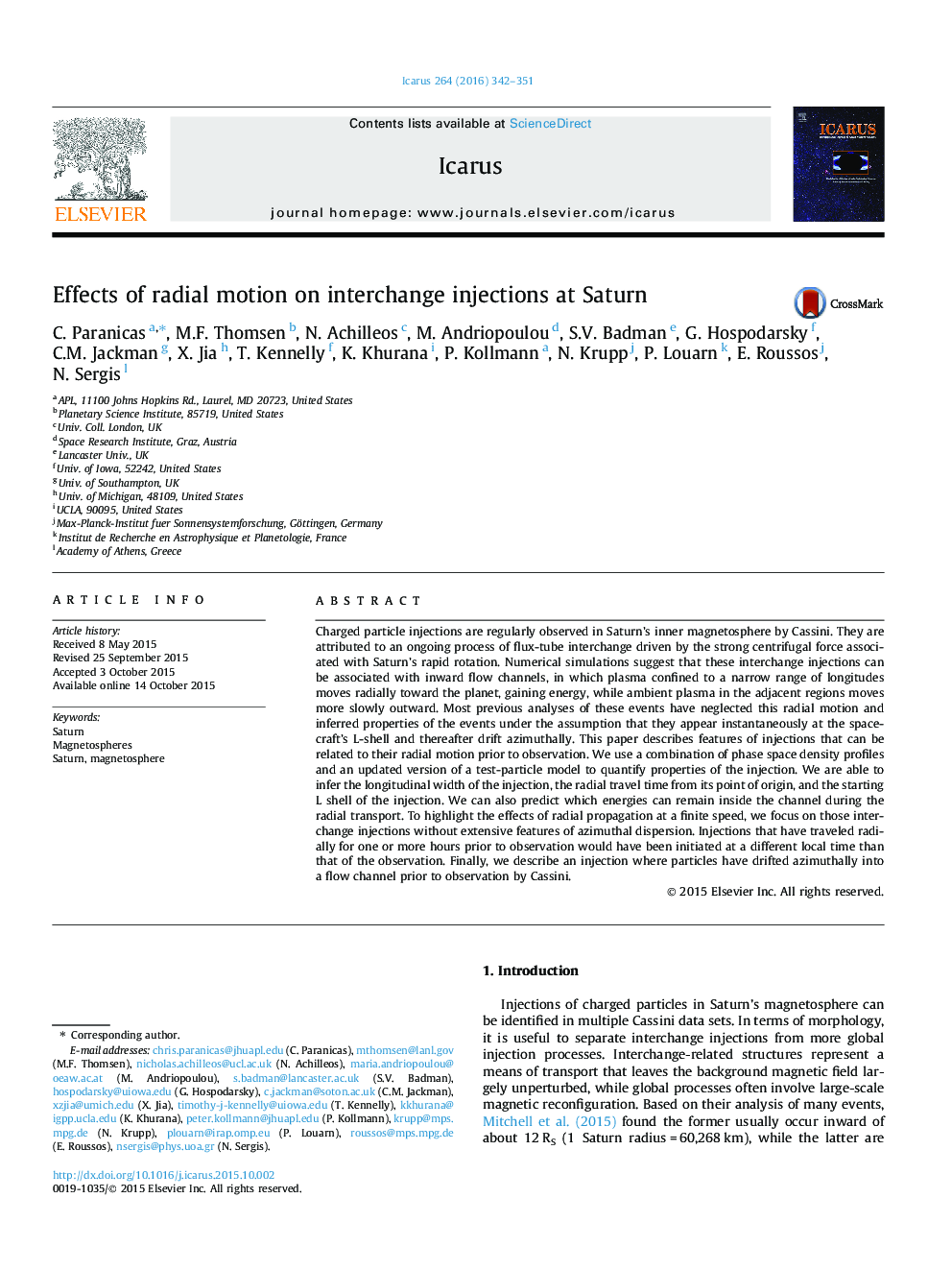| Article ID | Journal | Published Year | Pages | File Type |
|---|---|---|---|---|
| 8135921 | Icarus | 2016 | 10 Pages |
Abstract
Charged particle injections are regularly observed in Saturn's inner magnetosphere by Cassini. They are attributed to an ongoing process of flux-tube interchange driven by the strong centrifugal force associated with Saturn's rapid rotation. Numerical simulations suggest that these interchange injections can be associated with inward flow channels, in which plasma confined to a narrow range of longitudes moves radially toward the planet, gaining energy, while ambient plasma in the adjacent regions moves more slowly outward. Most previous analyses of these events have neglected this radial motion and inferred properties of the events under the assumption that they appear instantaneously at the spacecraft's L-shell and thereafter drift azimuthally. This paper describes features of injections that can be related to their radial motion prior to observation. We use a combination of phase space density profiles and an updated version of a test-particle model to quantify properties of the injection. We are able to infer the longitudinal width of the injection, the radial travel time from its point of origin, and the starting L shell of the injection. We can also predict which energies can remain inside the channel during the radial transport. To highlight the effects of radial propagation at a finite speed, we focus on those interchange injections without extensive features of azimuthal dispersion. Injections that have traveled radially for one or more hours prior to observation would have been initiated at a different local time than that of the observation. Finally, we describe an injection where particles have drifted azimuthally into a flow channel prior to observation by Cassini.
Related Topics
Physical Sciences and Engineering
Earth and Planetary Sciences
Space and Planetary Science
Authors
C. Paranicas, M.F. Thomsen, N. Achilleos, M. Andriopoulou, S.V. Badman, G. Hospodarsky, C.M. Jackman, X. Jia, T. Kennelly, K. Khurana, P. Kollmann, N. Krupp, P. Louarn, E. Roussos, N. Sergis,
